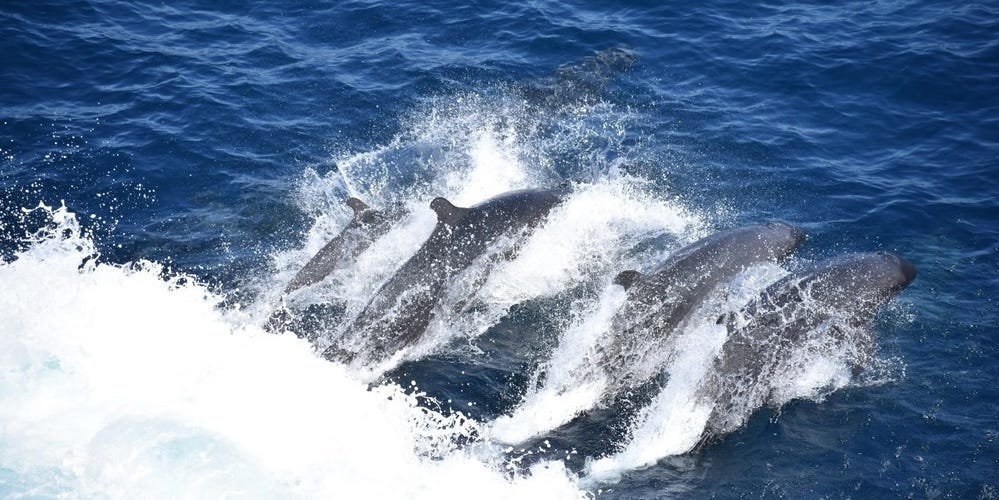There are scientists out there who are using AI to understand the sounds dolphins make, and it could have some world-changing impacts.
“I like to think that we will be able to talk to animals at some point,” Drew Purves, the nature lead at Google DeepMind, said on a recent episode of the company’s podcast.
The AI research lab has already been working on this through DolphinGemma, which it calls a “large language model that uses dolphin audio to help scientists study how dolphins communicate.”
The project, conducted in collaboration with Georgia Tech researchers and the field research of the Wild Dolphin Project, aims to decode the signals dolphins use to communicate and generate sounds to communicate back.
“It takes the sounds, separates them out, tokenizes them, and basically brings it into the world of large language modeling,” Purves said. “That’s an example of AI actively being used to study animal communication at a level we really couldn’t do before.”
These types of large language models could have a substantial impact on the collective knowledge of the world, Purves said. “Most of what we’re doing at the moment, as I mentioned, is filling known information gaps,” he said. “Sometimes, you think that the real change can come, in the long run, from these, these moments of awakening, where people almost overnight can change their relationship with nature.”
Work like this has been underway for years. The Earth Species Project, a nonprofit founded in 2017, uses AI to decode non-human communication. Its flagship model, NatureLM-audio, is “the world’s first large audio-language model for animal sounds” and aims to help researchers detect and classify species and even recognize the sounds of new species, according to its website.
One of the things the nonprofit has already learned in its research is that many species of animals — elephants, gray parrots, marmosets — all have names for each other, Katie Zacarian, the cofounder and CEO of the Earth Species Project, said at the Axios AI+ SF Summit last year.
The vision is to use its technology to “reconnect human beings with the rest of nature in a way that all the diversity of species can thrive and not just accelerate and exacerbate the existing challenges that we’re faced with where we’re extracting, we’re taming, we’re exploiting the rest of nature — that’s not the goal here,” Zacarian said.
And when it’s all said and done, humans may no longer be at the top of the animal kingdom.
“We looked out at the universe and discovered that Earth was not the center,” Aza Raskin, cofounder and president of the Earth Species Project, told Scientific American. “These tools are going to change the way that we see ourselves in relation to everything.”
Read the full article here


